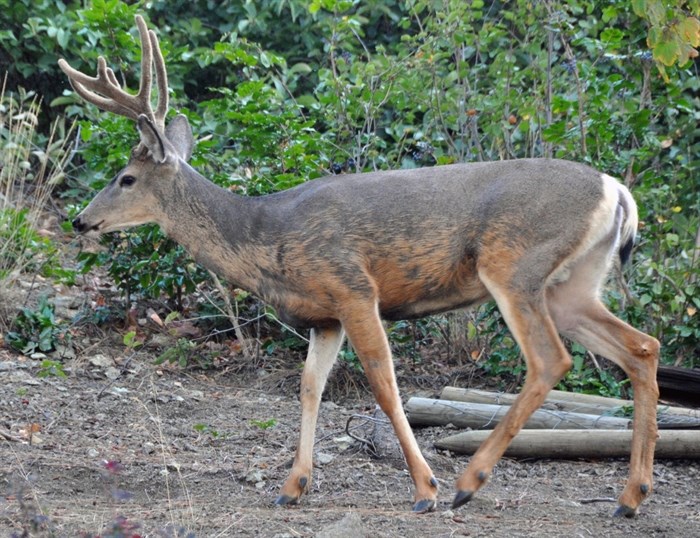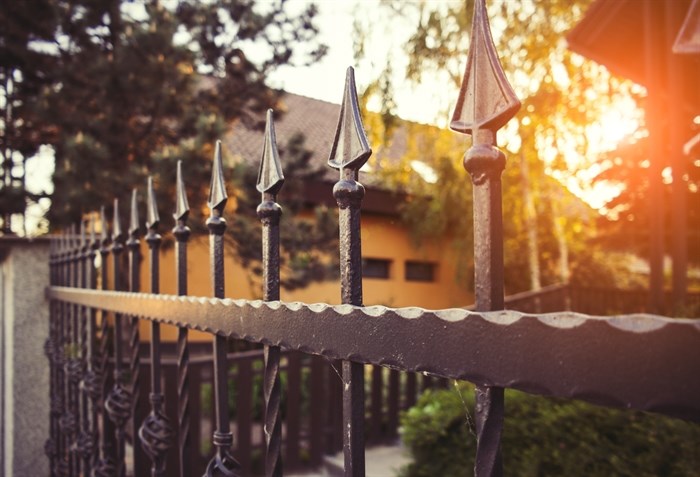
Urban deer in a Kelowna backyard.
(JOHN MCDONALD / iNFOnews.ca)
December 31, 2020 - 3:00 PM
Kelowna conservation officers had to euthanize two deer in recent weeks after the animals were found impaled on wrought iron fences.
A poorly designed or poorly placed fence in a residential area can be lethal for deer and other wildlife, conservation officer Ken Owens said in a press release.
On Dec. 26, officers found a mule deer doe impaled by pointed pickets rising above a top rail on a wrought iron fence in the Tuscany Lane area of Kelowna. On Dec. 30, officers found another doe entangled in a double top railed wrought iron fence in the Carrington Road area of West Kelowna.
Both deer had to be euthanized considering their severe injuries.
READ MORE: Why conservation officers in Kelowna want this popular type of fence to be banned

FILE PHOTO
Image Credit: Adobe Stock
The B.C. Conservation Officer Service wants to remind the public some fences can be very dangerous to deer and other wildlife and this situation is also occurring in other B.C. communities. These fences can cause animals pain and suffering as they struggle to free themselves and in many cases die stuck on the fence.
Owens said wrought iron fences erected with pointed pickets rising above the top rail are impaling deer when deer attempt to jump the fence and fences with double horizontal top rails spaced under 12 inches apart continue to injure, entangle and kill deer.
Studies have shown the height of a fence on deer range should not exceed 42 inches, Owens said. The space between two top horizontal rails should be a minimum of 10 inches, but a 12-inch space is preferred.
The top space is important to deer because of the way they jump fences. Whitetails and mule deer draw their legs under their bodies as they leap a fence. If one or both hind legs fail to clear the top rail, the legs may catch between the top two rails as the deer continues over the fence.
In Kelowna an upwards 20 deer annually are being injured and killed by these fences. The highest occurrences of injured deer are between mid-December to mid-April.
READ MORE: Moose impaled on spiked fence in Kelowna renews call for bylaw changes
The City of Kelowna, through a bylaw, has prohibited new wrought iron fences from being erected with pointed pickets rising above a horizontal rail.
"It’s a step in the right direction and we’re hopeful other communities and regional districts experiencing similar issues within the province will follow Kelowna’s lead in better co-existing with wildlife," Owens said in the release.
For more information on ways to reduce human wildlife conflict contact the B.C. Conservation Officer Service at 1-877-952-7277 or go to the WildSafeBC website here.
To contact a reporter for this story, email Carli Berry or call 250-864-7494 or email the editor. You can also submit photos, videos or news tips to the newsroom and be entered to win a monthly prize draw.
We welcome your comments and opinions on our stories but play nice. We won't censor or delete comments unless they contain off-topic statements or links, unnecessary vulgarity, false facts, spam or obviously fake profiles. If you have any concerns about what you see in comments, email the editor in the link above.
News from © iNFOnews, 2020